Even though I like to write about Paris’s ethnic neighborhoods, a recent walk showed me that’s not really the right term. It implies boundaries and separation, when in fact many flow into each other, almost without warning.
In three-plus hours, my sister Christine and I passed through African, Algerian, Chinese and arty-vegan pockets of the Belleville district in the eastern part of the city. Not to mention an unexpected church and a park on a hill.
It was New Year’s Day, sunny and with highs in the upper 50s. Du jamais-vu (unheard-of), as we say. We were glad we could spend Christine’s last day in Paris outdoors, since COVID-19 is spiking in France. Cases are not up as much as they are in the U.S., but 110% in seven days isn’t nothing, and hospitalizations have risen about one-third of that.
The government’s mask-wearing requirement has been extended to outdoors again (masks have been obligatoire indoors since early 2020) so we dutifully endured glasses fog as we got off the Métro at the Goncourt stop. That’s near the western boundary — OK, there are some boundaries — of Belleville. The area is mostly known as Paris’s Chinatown, though there’s a bigger one in the 13th arrondissement. In any case, most of the shops we saw on the rue du Faubourg du Temple served the North African community: citizens and immigrants from Algeria, Morocco and Tunisia.

Photo: Christine Swardson Olver
Though this butcher was closed, another was open, and one of the young men behind the counter seemed amenable to explaining what was different about Halal butchery. “They cut the throat and drain the animal,” he said cheerfully. This may have been a slight simplification, but it certainly was graphic.
Our next encounter was at a small produce store whose sign proclaimed its wares were Latino/Antillais/Africain/Franco-Orientaux. Like I said, we made a lot of ethnic discoveries in a short time. Displayed out front were some hard-skinned vegetables of various kinds, including yams from Brazil.
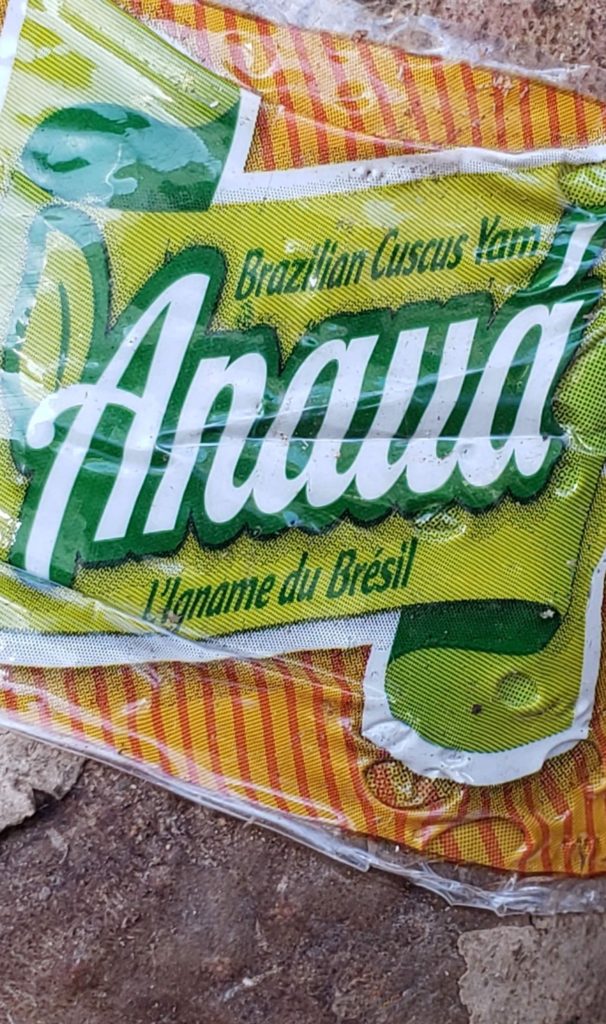
Photo: CSO
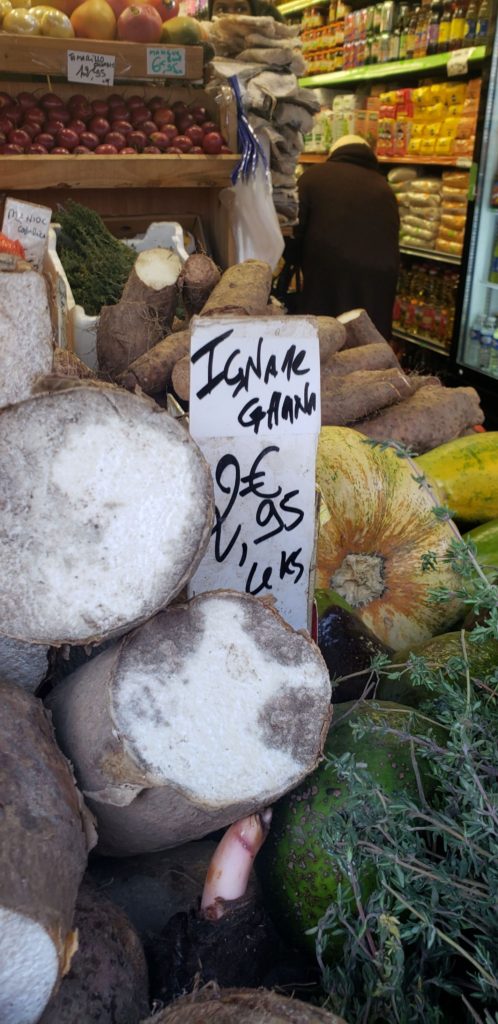
Photo: CSO
We left after an employee either did or didn’t scold Christine for taking photos, while talking on his cell phone. His meaning wasn’t clear but he didn’t look happy.
We then took a detour to see the street art on the rue Dénoyez. Paris street art, like street art in other cities, is not random graffiti, it’s real art. I’ve written about that about here and here. You can take walking tours of the best Paris neighborhoods for street art, as well as experience museums, festivals, and videos. The French term, by the way, is “street art.”
Walking the rue Dénoyez made me want to learn more about the artists themselves, the work we saw was so powerful.

Photo: CSO
I don’t know if it was the artist who did it, but I also liked the fake street name.
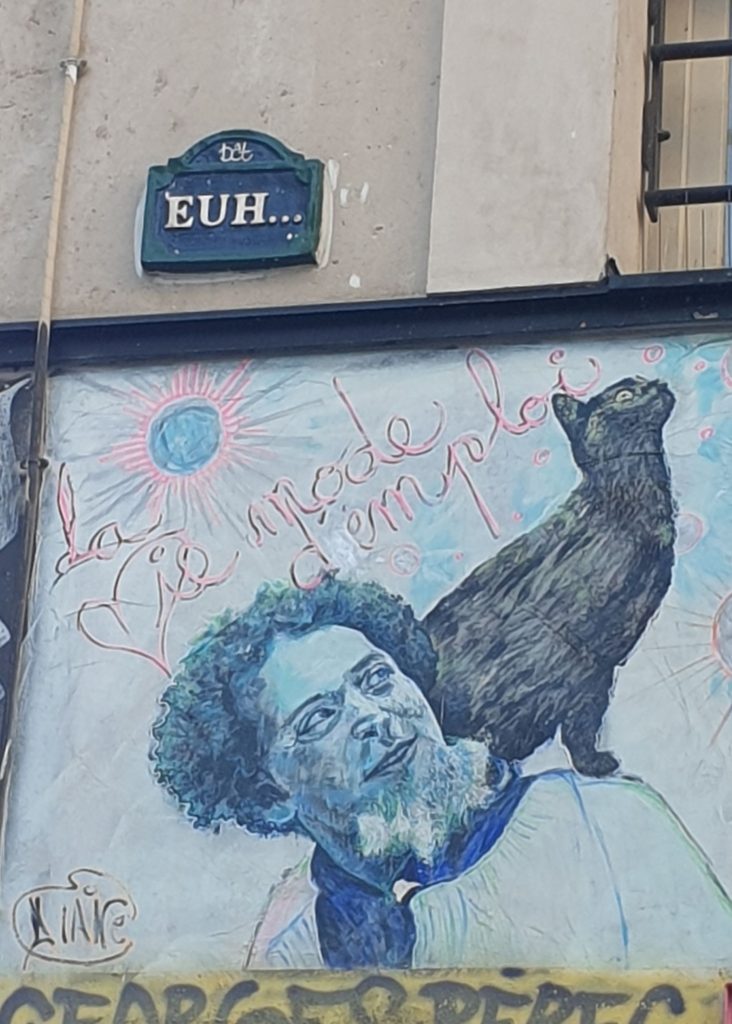
Photo: Anne Swardson
As the rue du Faubourg du Temple climbed, the stores and population showed more of a Chinese aspect.
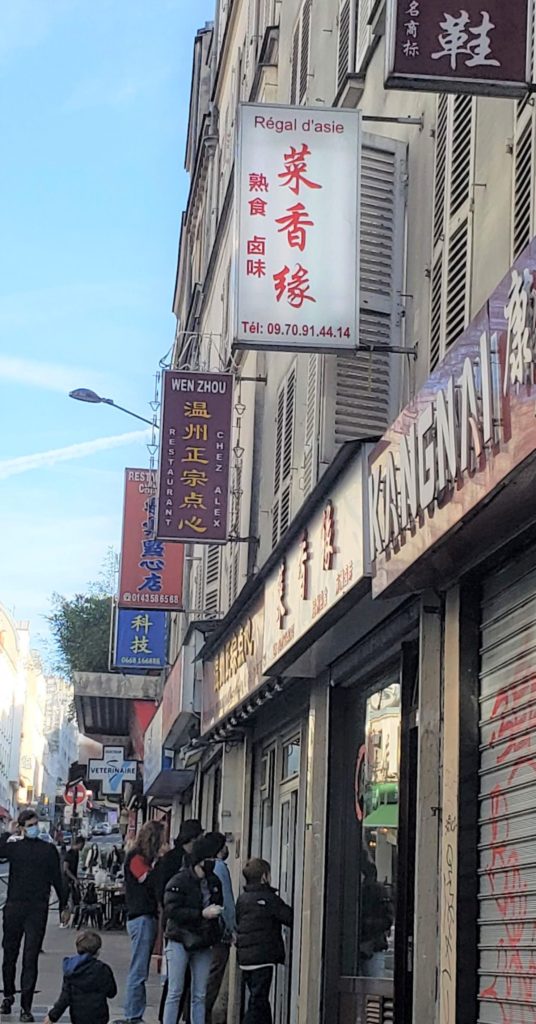
Photo: CSO
We had hoped to have lunch in a Chinese restaurant but the ones we saw were either crowded and unventilated, or closed.

Photo: CSO
We decided to get takeout and eat in the Parc de Belleville, which was nearby and totally charming. And we saw an old friend far in the distance.
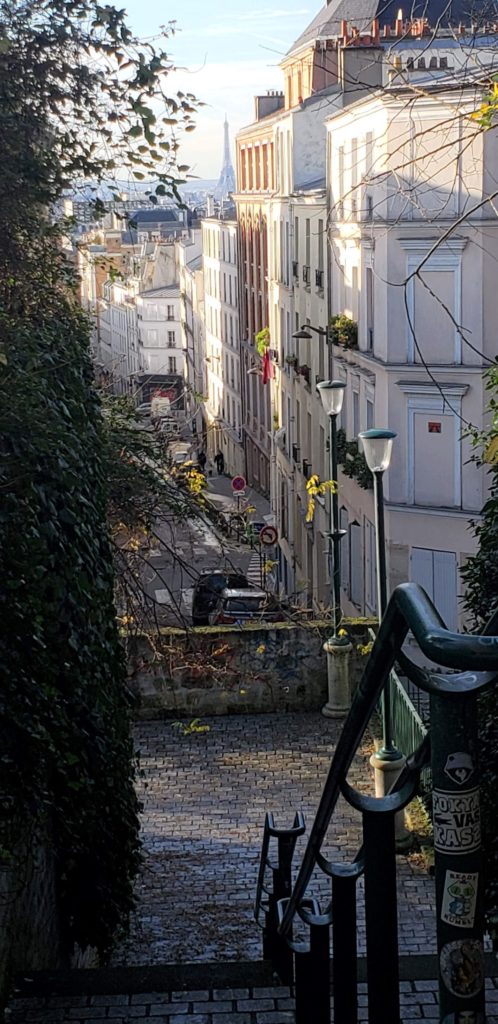
Photo: CSO
The park was perched on a hill, with views across much of Paris and more public art on the walls of the gazebo.

Photo: CSO
We also saw a dancer practicing before a small audience.
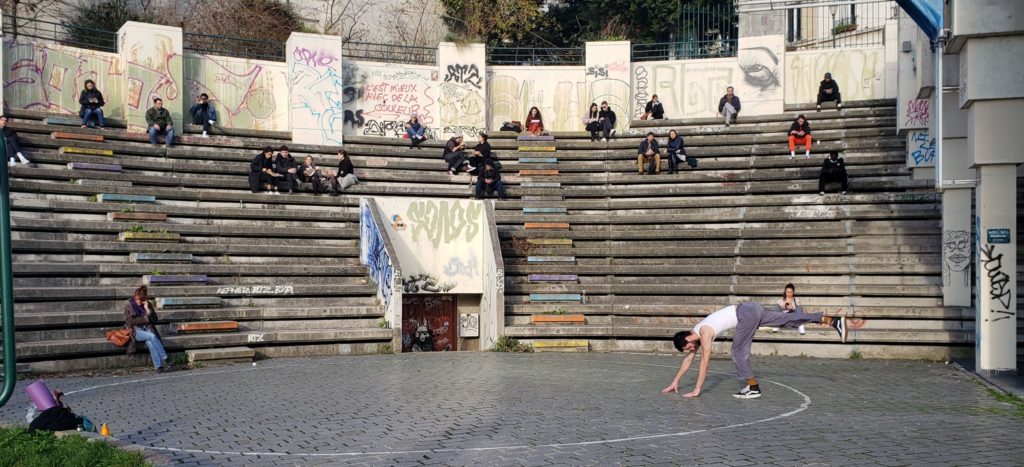
Photo: CSO
There was a vegan restaurant as we exited at the top of the park, but the line for takeout was too long. So we headed down the other side of the hill through a classic Parisian neighborhood that also featured a plant-strewn passage leading to houses where several anarchist plots were fomented at the end of the 19th century. This was explained in a historical plaque that described the bombing of a café near the Gare Saint-Lazare that killed one and injured 20, or of a police commissariat near Palais-Royal that killed five officers. It was a reminder that terrorism here is not a recent invention.
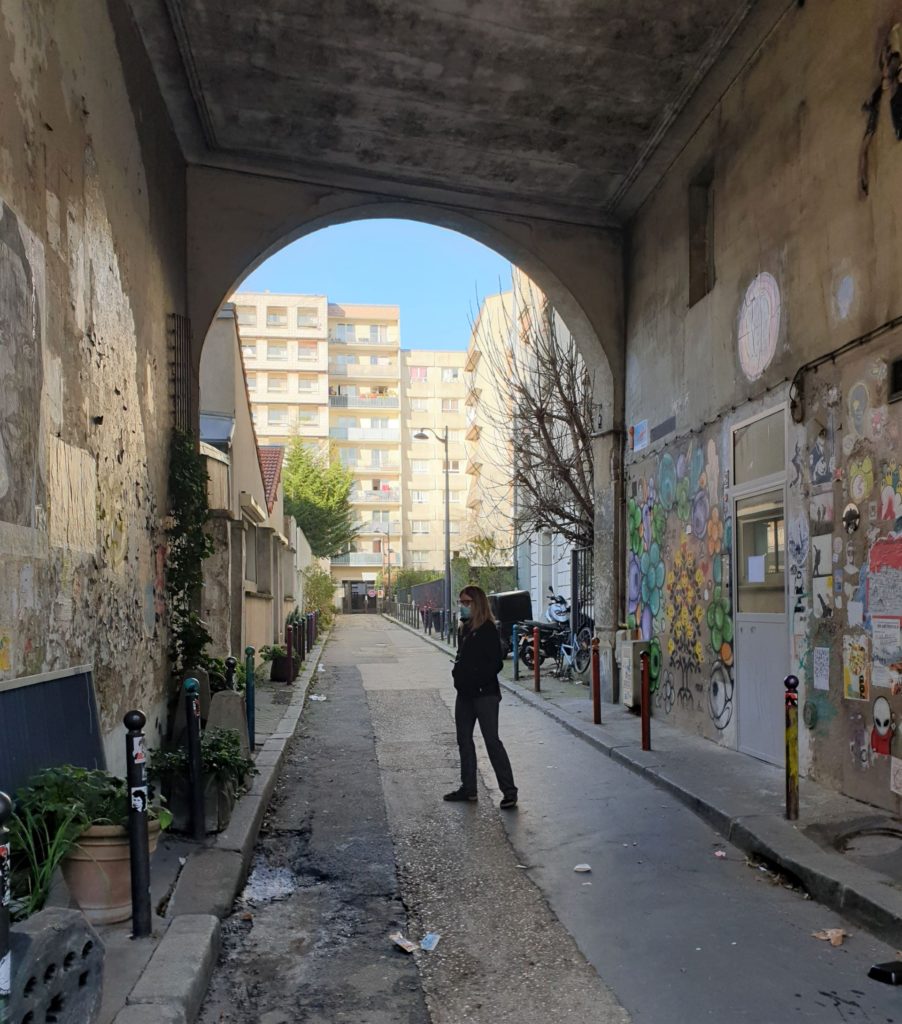
Photo: AS
Our stomachs were rumbling by this time, and happily, a restaurant soon came into view, on the Rue des Pyrénées. We each had an excellent couscous maison.

Photo: CSO
We realized as we continued that a church we had seen from the top of the park and had been unable to identify was nearby. Off we went to the Eglise Saint Jean-Baptiste de Belleville, a well-proportioned neogothic structure built only in 1859. I liked its simplicity: It even had a wooden cross.
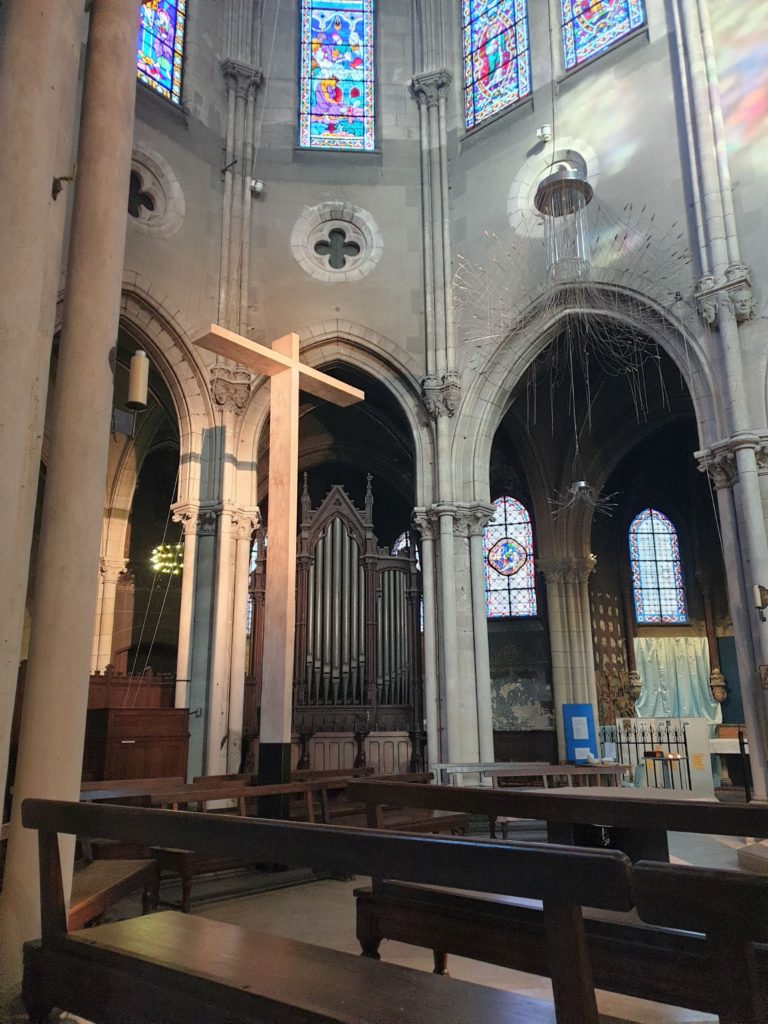
Photo: AS
Our last destination was the Place des Fêtes, heralded for its alleged modern reinvention of the city-square concept. It had a large central park but it was mostly concrete and pleased us not at all. It did not even deserve a photo.
Then it was down the hill to take the tram around the city to go home, a fitting circumferential ending to our explorations of Paris’s edges during Christine’s time here.

Map: CSO

Thank you! A great article which really brings the area to life. As it happens, I was there last weekend too. We took bus 20 for its entire length, from Les Lilas to Levallois – a really interesting route with lots of very different neighbourhoods. The sinuous rue de Belleville has a surprise around every corner, not least the church of Saint Jean-Baptiste de Belleville. As the bus wound its windy way down the hill I imagined myself on the cable trams that once plied the route*. I don’t think there were quite so many Chinese restaurants and stores back then…
Happy new year!
*See https://fabricofparis.com/2021/10/08/tramways-ile-de-france-history-belleville-funicular.html
I’m so glad you liked it! And it’s very embarrassing to say but I LIVE at Pereire and didn’t even know I could have taken a bus to Belleville so I’m glad to learn about that. I did once write a short story that takes place on the route of the 69 bus from start to finish. https://anneswardson.com/wp-content/uploads/2021/01/wheelsonthebus-full-web.pdf
Thanks for the post. Visited Paris frequently but never visited arrondissements walked by you
I’m glad you enjoyed it!
I love your offerings. Thanks so much.
Thanks so much, Winky!
Worthy descendant of a chanson de Roland
Thank you! In all his walks in Paris, I don’t think he ever went near Belleville.
Great content! Keep up the good work!
Thank you!